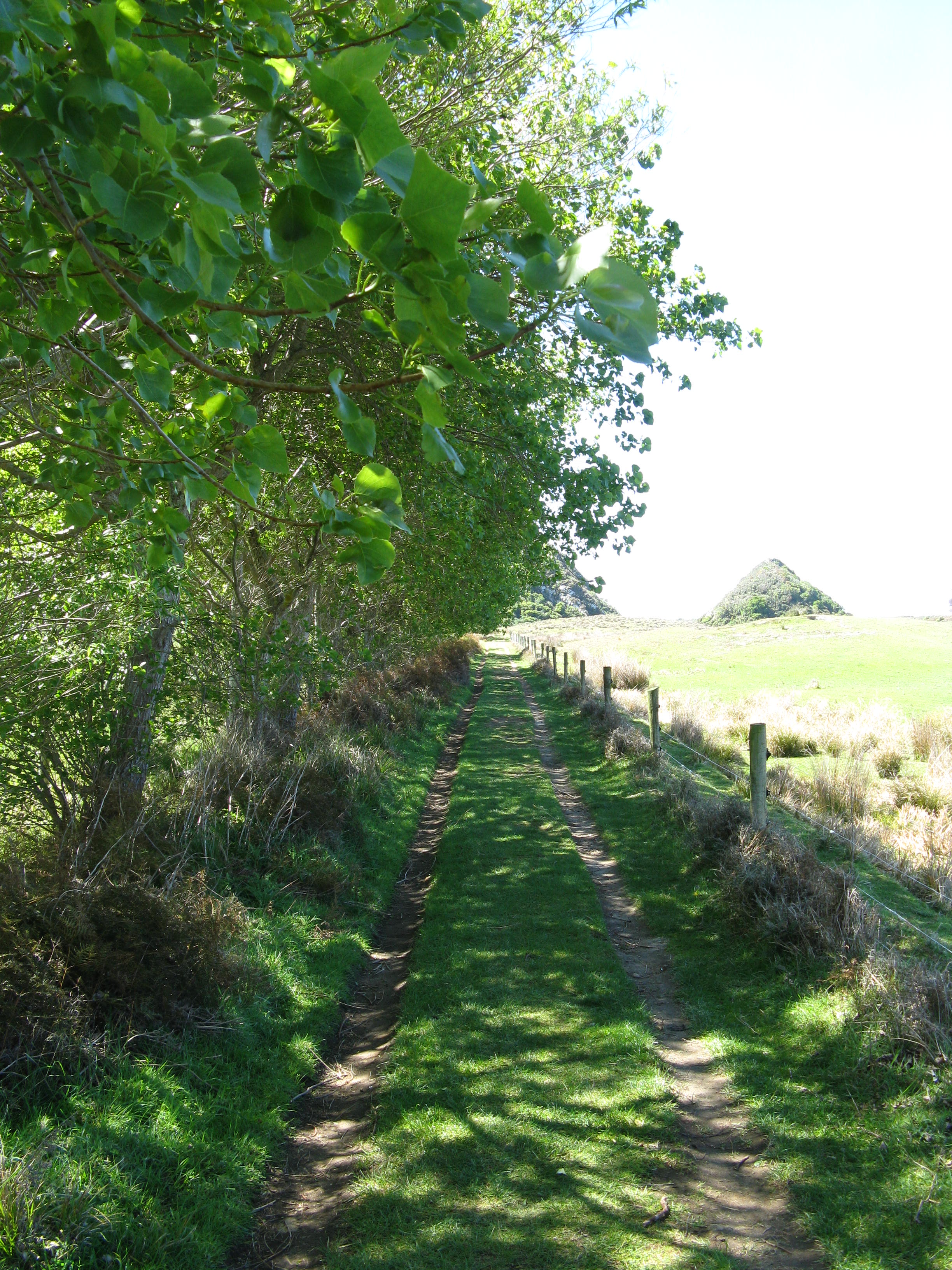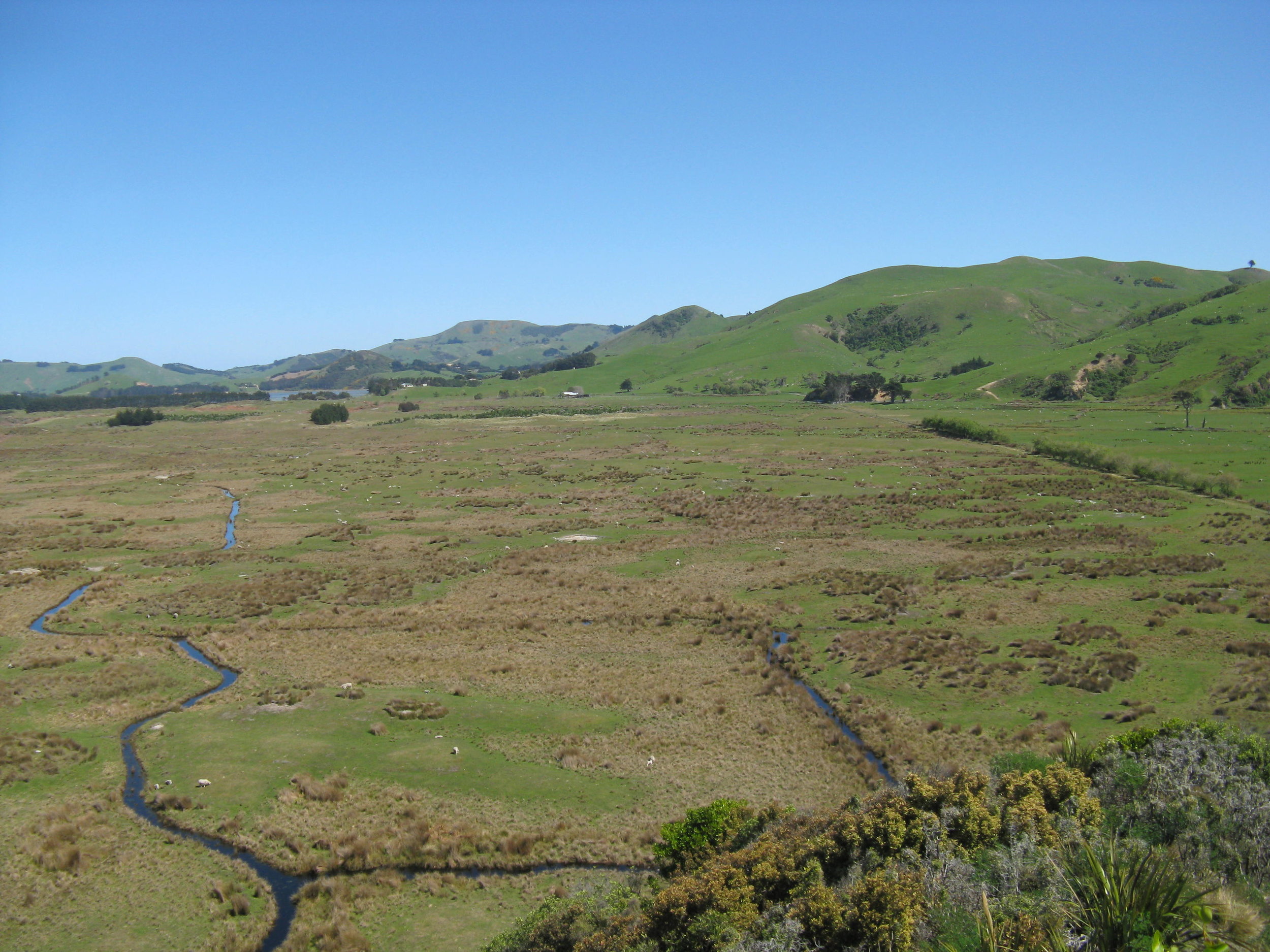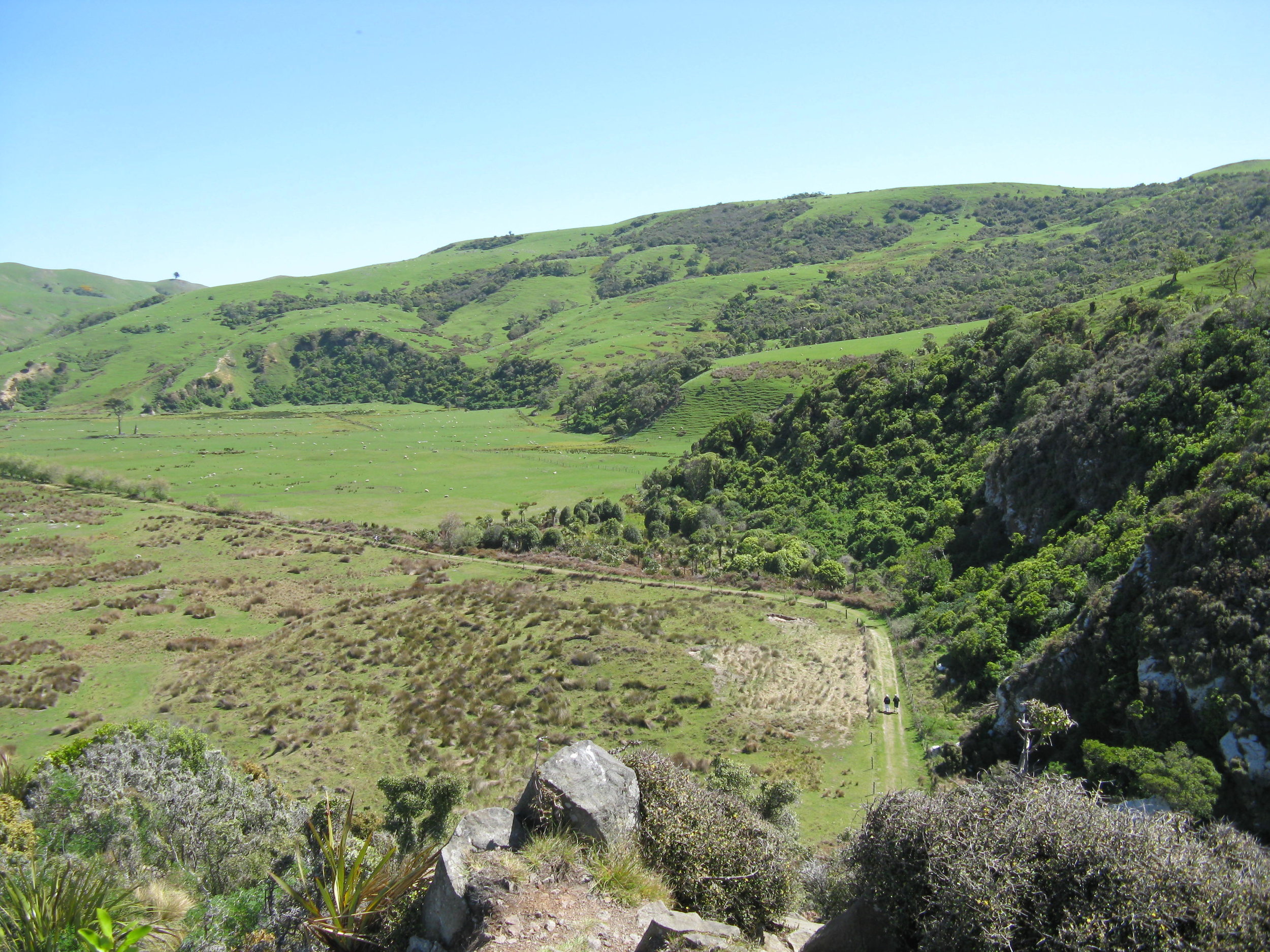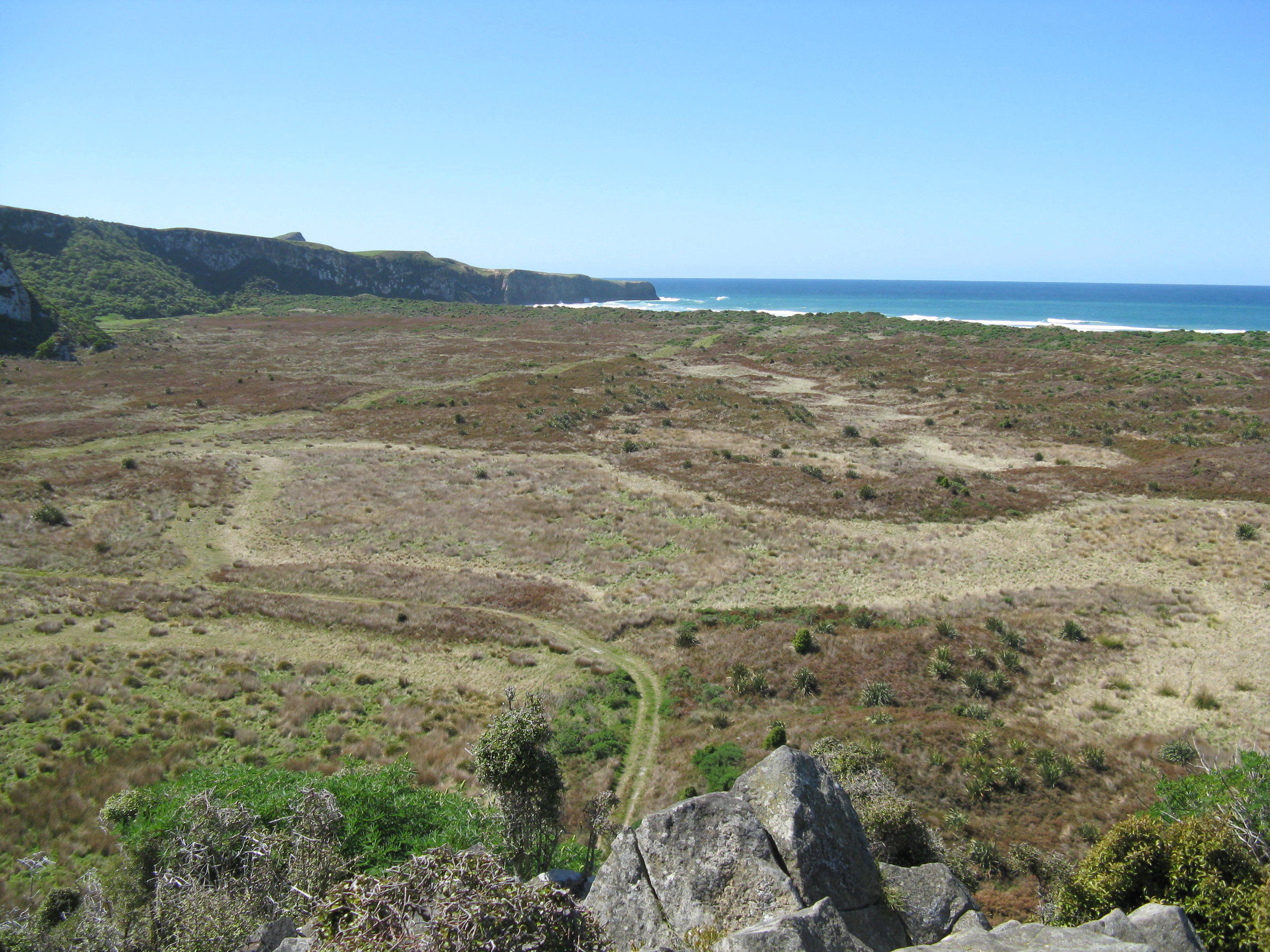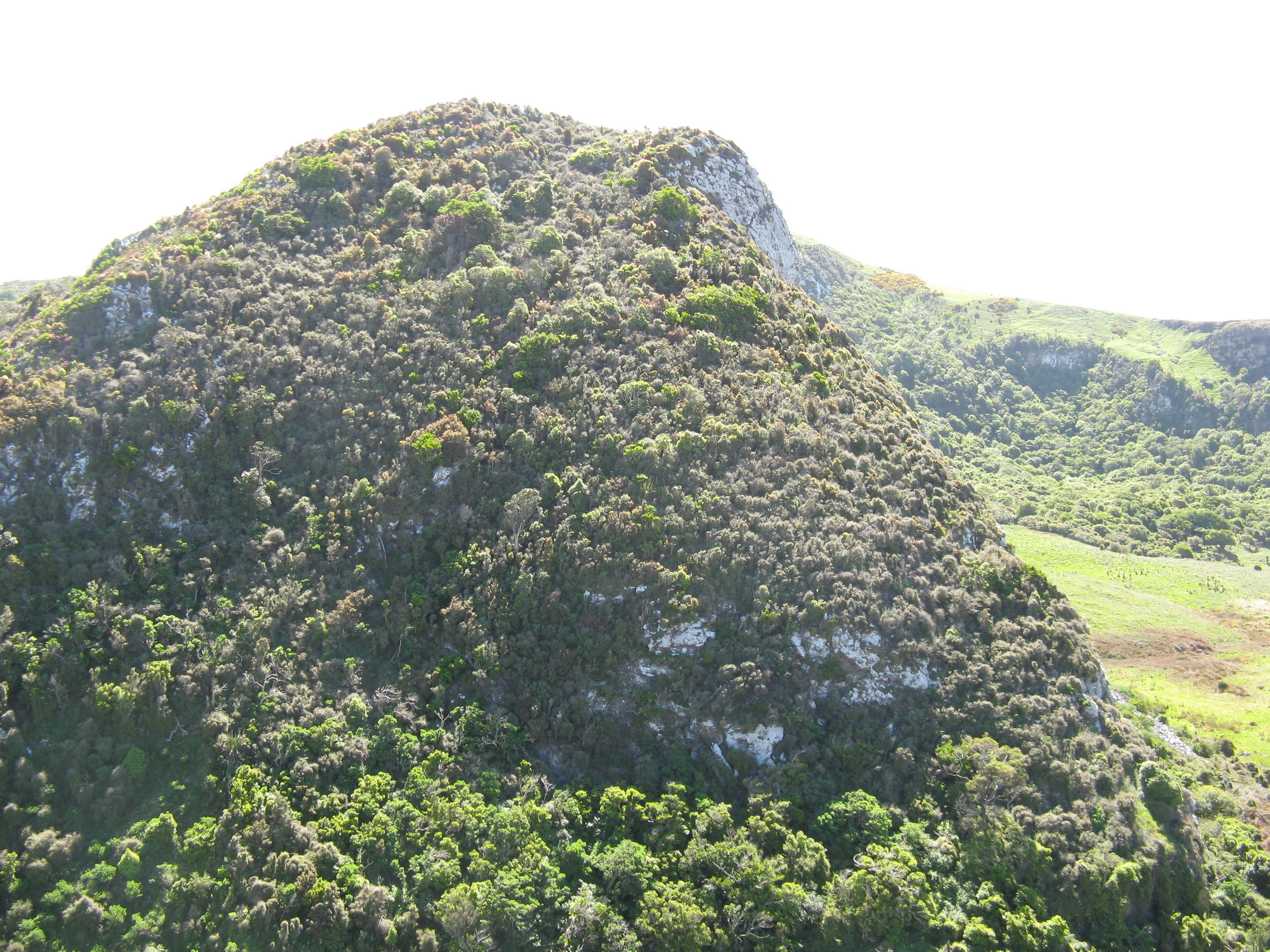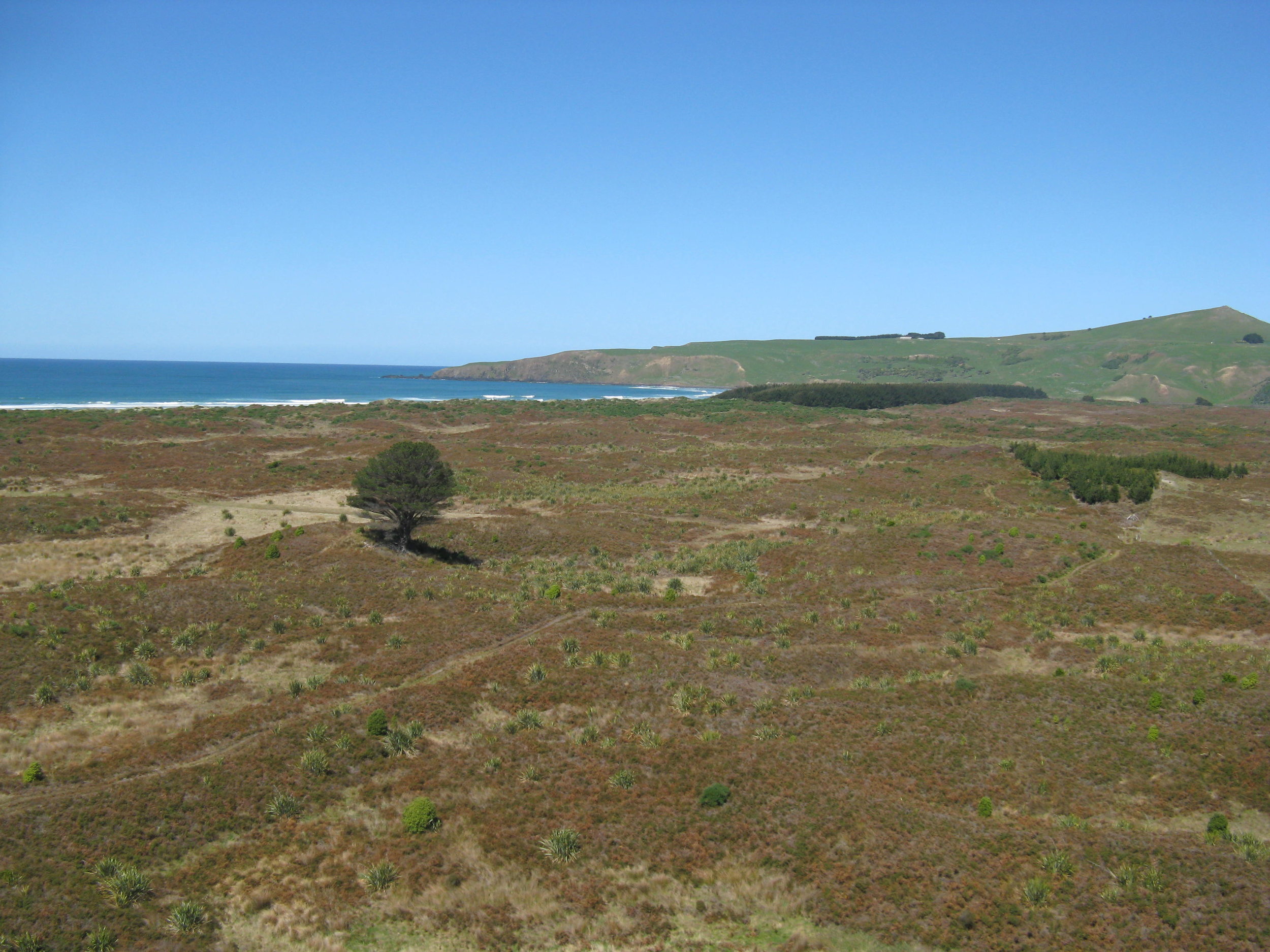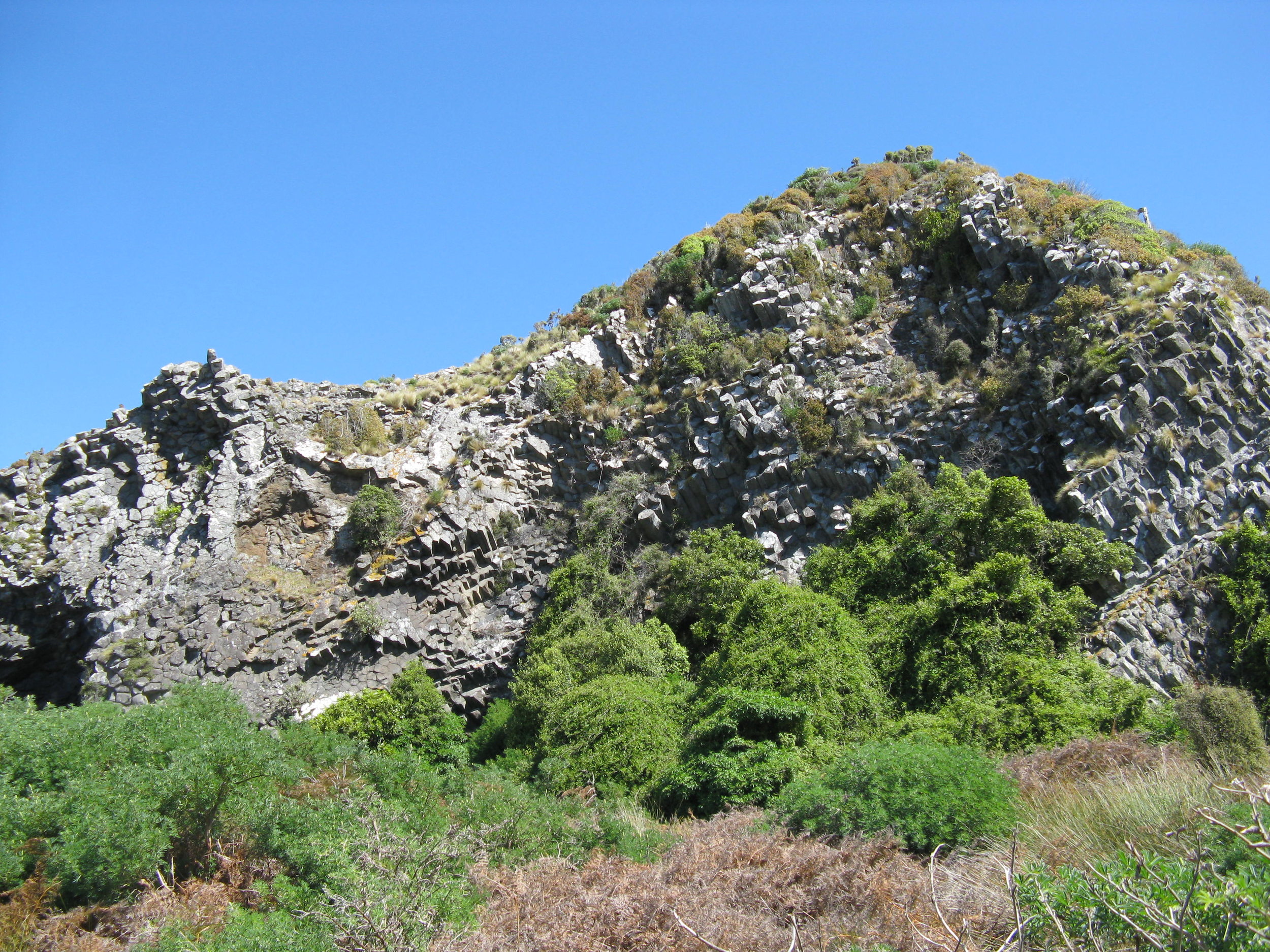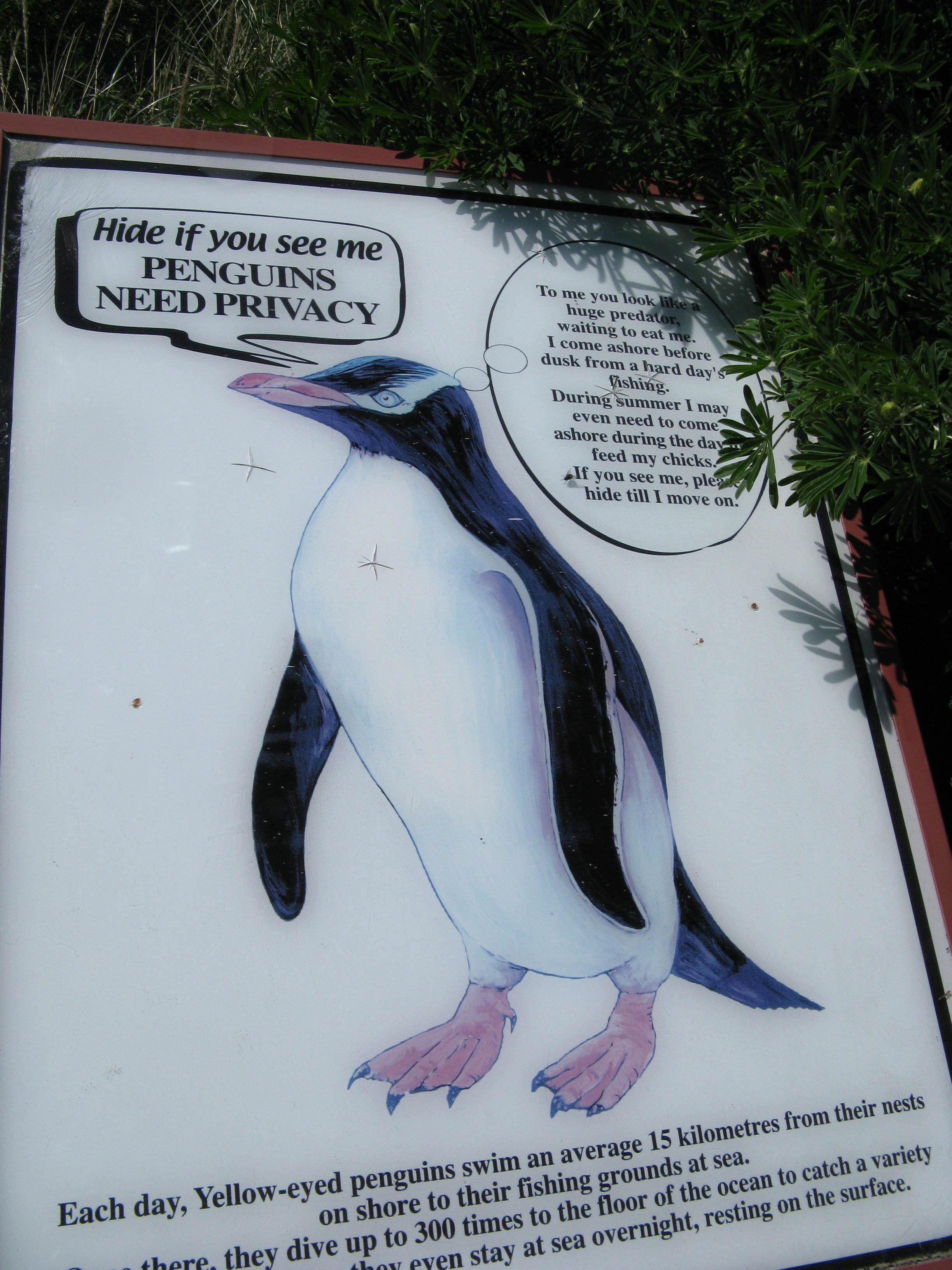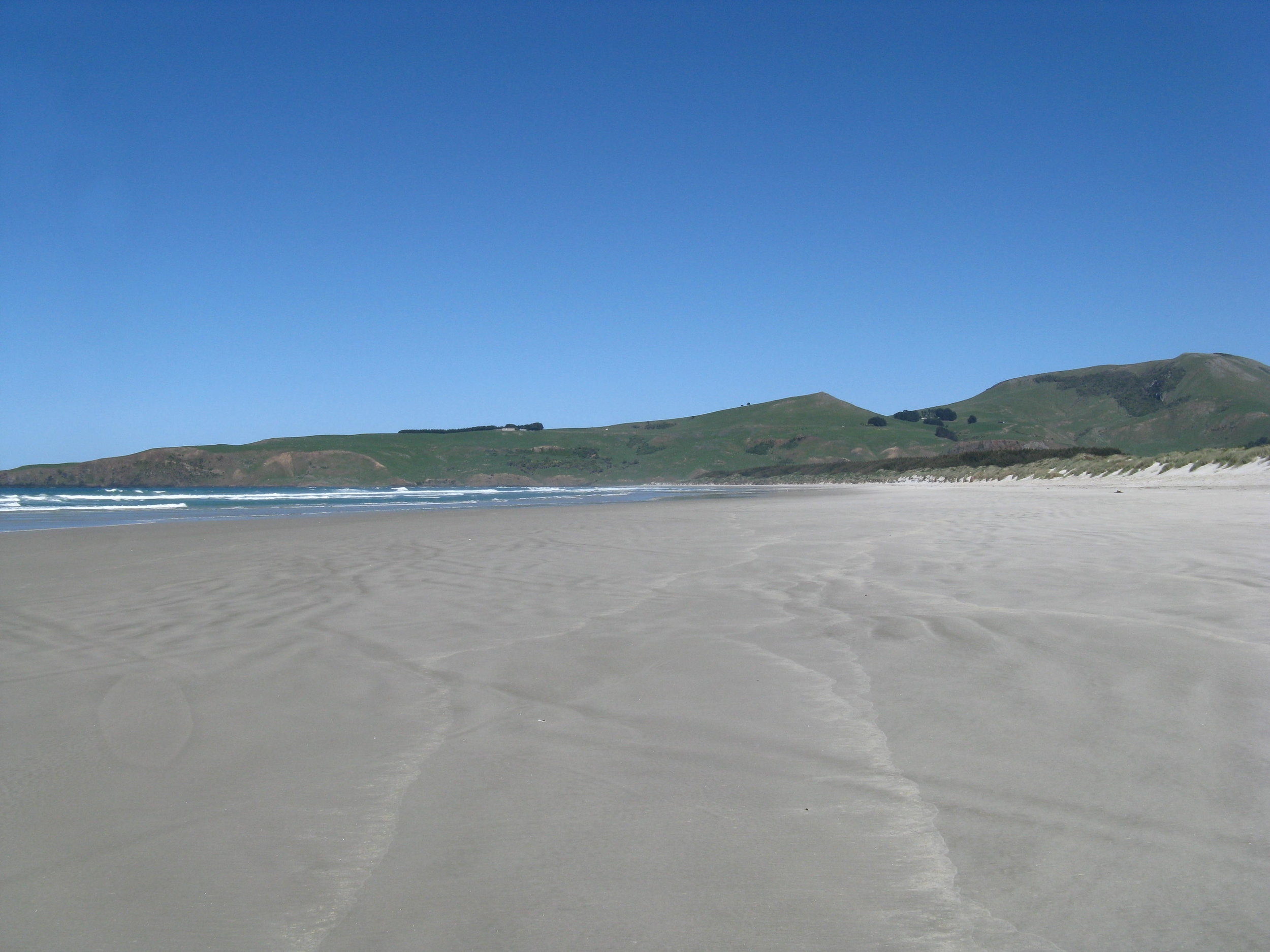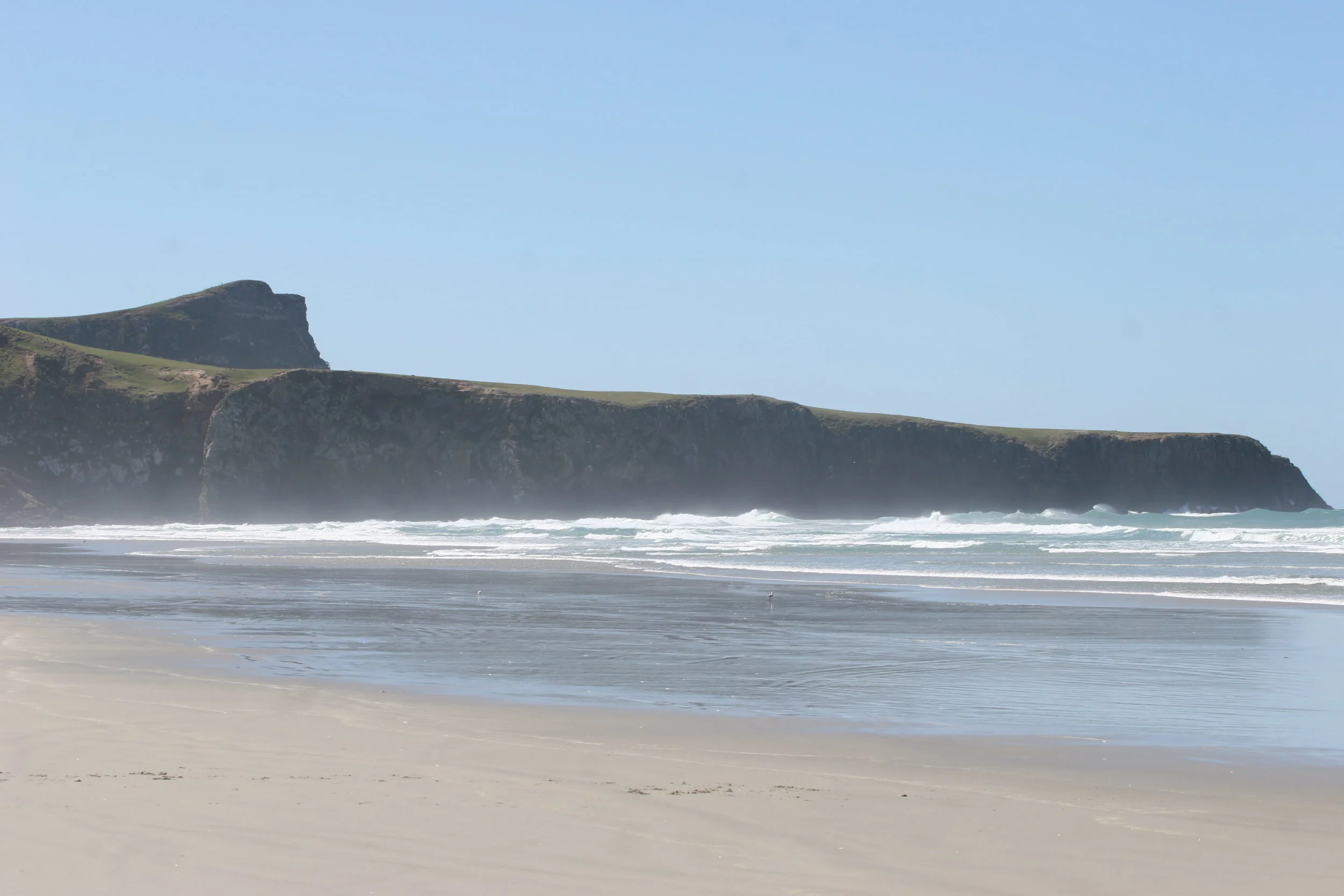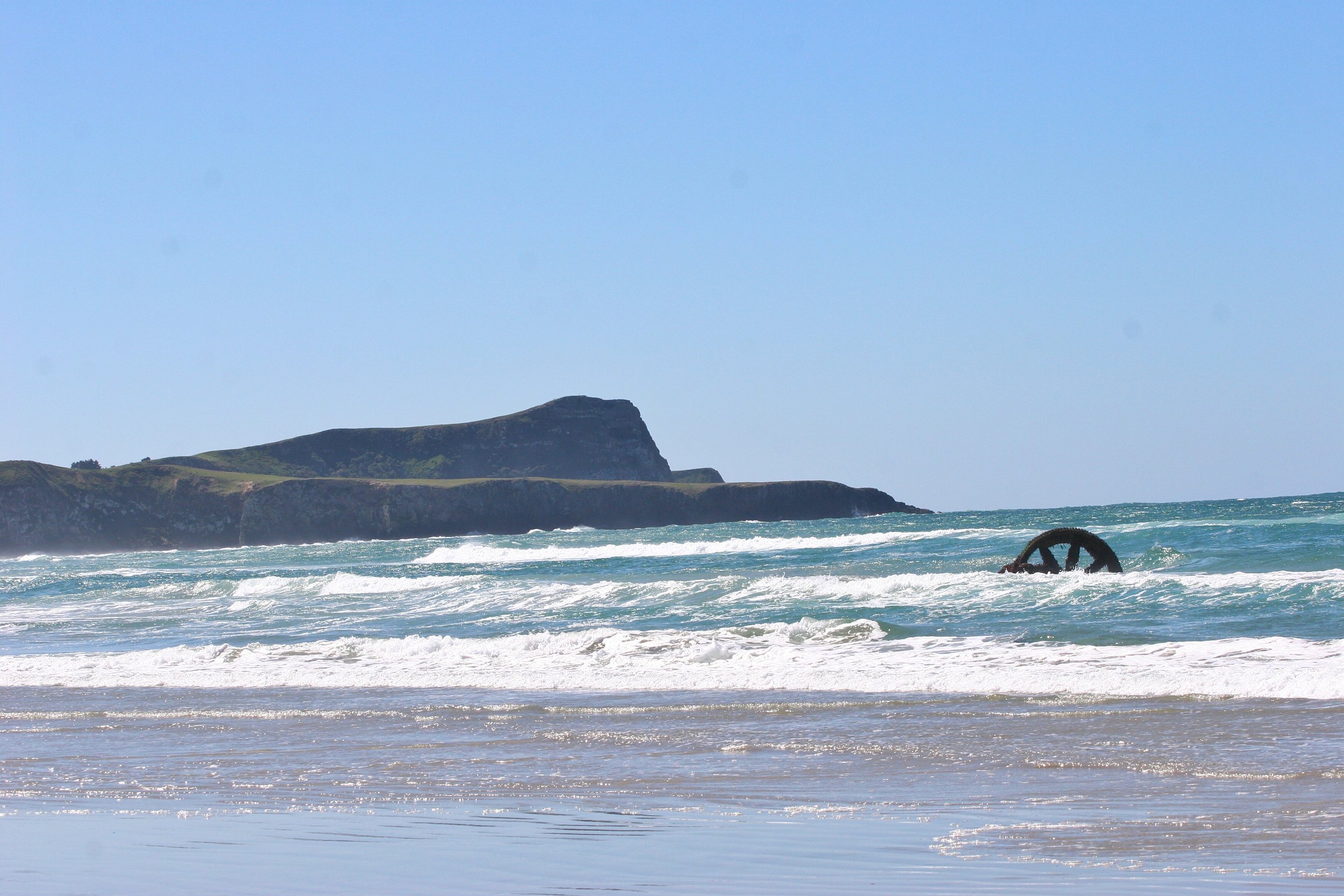Flywheel of the SS Victory, Victory Beach
While the entirety of New Zealand has a number of pristine beaches, only one beach has a unique off-shore man-made feature and that beach is Victory Beach on the Otago Peninsula. The beach is named for the SS Victory, which, in 1861, ran aground at the end of the beach when under the control of one George Hand (who was later found to be intoxicated at the time of the wreck). While the majority of the wreck was auctioned off during the nineteenth century, and is now absent from the beach, one item remains - one of the huge flywheels of the wreck, which remains affixed about ten feet from the shore, a giant steampunk relic of a long-lost time.
Flywheel, SS Victory, Victory Beach
While a giant mystery wheel covered in barnacles is generally something that most people want to see regardless of other items, Victory Beach also has some other notable features. First, it is the longest beach on the Otago Peninsula at three and a half (3.5) kilometers in length (2.1 miles). Second, it is also the site of “the pyramids”, the remains of the lava flows of the Dunedin Volcano, which erupted some twelve million years ago. While most of these features are covered in heavy plant growth today, trails do lead up to the tops of some of the now inactive volcanic vents, and some areas of basalt volcanic columns also remain. While not as distinctive as the Giant’s Causeway, these formations were formed through the same geologic processes.
Victory Beach is a great spot for wildlife viewing on the Otago Peninsula
Finally, if a pristine long beach, volcanic vents, and a giant flywheel weren’t reason enough to visit this area, Victory Beach due to its somewhat secluded location is a great spot to see both yellow eyed penguins, and sea lions. While one only needs to keep their distance from yellow eyed penguins, sea lions are another matter entirely. Due to the terrain of Victory Beach - scrubland, dunes, and rock formations, it is possible for sea lions to be resting in certain areas and not been seen by the naked eye. As such, visitors should take precautions not to startle - or provoke these large marine mammals, as they can move short distances at a very fast clip, and will behave aggressively when startled. But, if one is willing to take the risk and the proper precautions, this is a great wildlife viewing area, as I saw three sea lions during my visit from a safe distance.
Victory Beach is quite popular with Sea Lions, whom should be given a wide berth.
Directions: From Dunedin, visitors will want to follow Portobello Road out of the city (to the East), and along the Otago Peninsula. Over the course of 26 kilometers (16.1 miles), explorers will be treated to excellent views of the city, and the wild Otago peninsula. Travelers should be advised that much of Portobello Road is single-lane, and quite narrow at times, with some sharp turns. After the town of Portobello, the road becomes a narrow gravel track the remainder of the route to Victory Beach. Given the rugged and remote nature of the area, visitors should possess either a good map of the region, or a GPS unit in order not to get lost. From the parking area, it is a two kilometer (1.2 mile) walk down a level lane, past the Pyramids and down to the beach. For the intrepid explorer that wishes to explore the entirety of the beach, it is a 5.5 kilometer (3.4 mile) one way distance over mostly flat terrain. Exploring up some of the Pyramids adds a small amount of distance as well.
Sea Lions are wild animals who should not be bothered. This picture was taken from a far distance with a long long lens.
Tips: For those parties that have access to a car, or have a car, I highly recommend Victory Beach as it provides a great experience without a lot of tourists on the Otago Peninsula.
